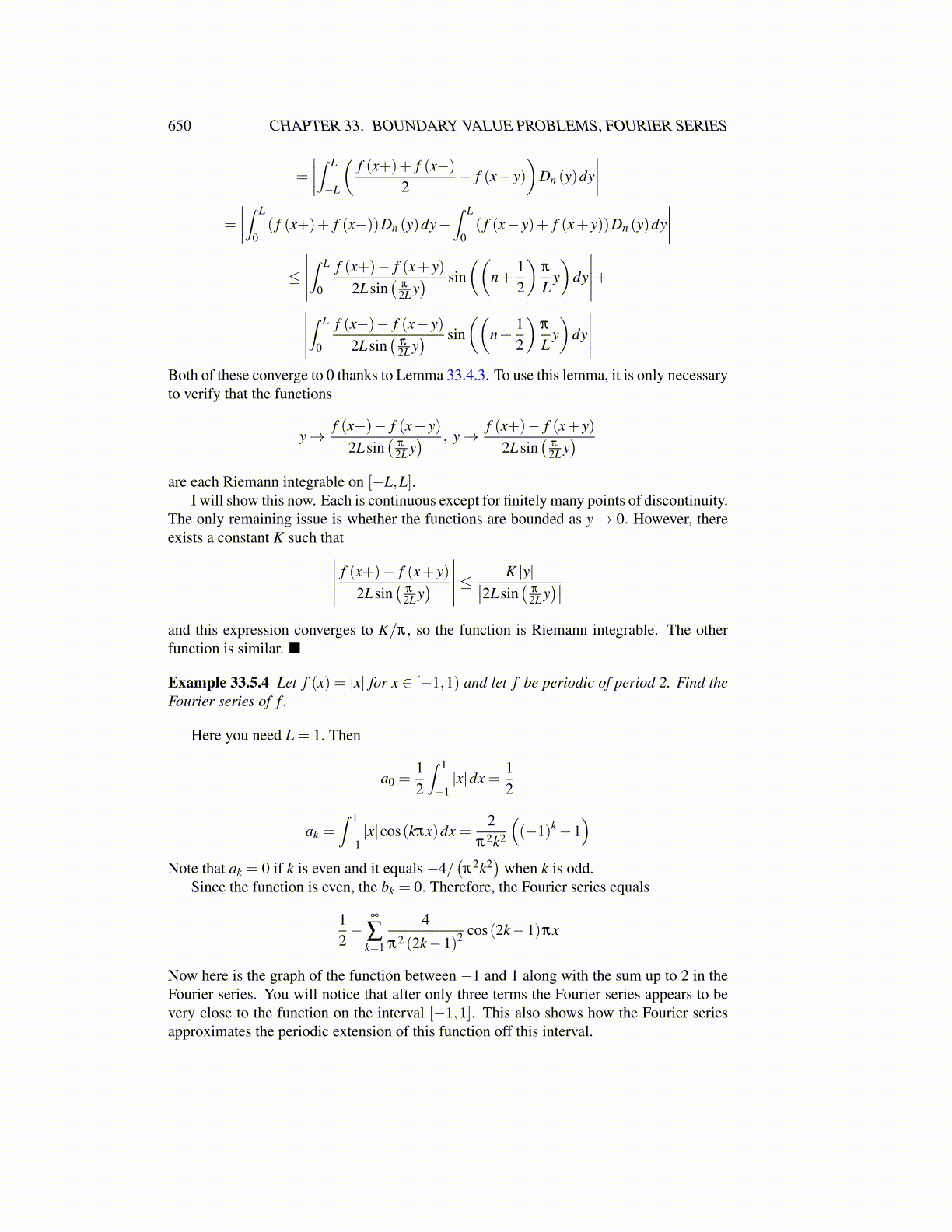
650 CHAPTER 33. BOUNDARY VALUE PROBLEMS, FOURIER SERIES
=
∣∣∣∣∫ L
−L
(f (x+)+ f (x−)
2− f (x− y)
)Dn (y)dy
∣∣∣∣=
∣∣∣∣∫ L
0( f (x+)+ f (x−))Dn (y)dy−
∫ L
0( f (x− y)+ f (x+ y))Dn (y)dy
∣∣∣∣≤
∣∣∣∣∣∫ L
0
f (x+)− f (x+ y)2Lsin
(π
2L y) sin
((n+
12
)π
Ly)
dy
∣∣∣∣∣+∣∣∣∣∣∫ L
0
f (x−)− f (x− y)2Lsin
(π
2L y) sin
((n+
12
)π
Ly)
dy
∣∣∣∣∣Both of these converge to 0 thanks to Lemma 33.4.3. To use this lemma, it is only necessaryto verify that the functions
y→ f (x−)− f (x− y)2Lsin
(π
2L y) , y→ f (x+)− f (x+ y)
2Lsin(
π
2L y)
are each Riemann integrable on [−L,L].I will show this now. Each is continuous except for finitely many points of discontinuity.
The only remaining issue is whether the functions are bounded as y→ 0. However, thereexists a constant K such that∣∣∣∣∣ f (x+)− f (x+ y)
2Lsin(
π
2L y) ∣∣∣∣∣≤ K |y|∣∣2Lsin
(π
2L y)∣∣
and this expression converges to K/π , so the function is Riemann integrable. The otherfunction is similar. ■
Example 33.5.4 Let f (x) = |x| for x ∈ [−1,1) and let f be periodic of period 2. Find theFourier series of f .
Here you need L = 1. Then
a0 =12
∫ 1
−1|x|dx =
12
ak =∫ 1
−1|x|cos(kπx)dx =
2π2k2
((−1)k−1
)Note that ak = 0 if k is even and it equals −4/
(π2k2
)when k is odd.
Since the function is even, the bk = 0. Therefore, the Fourier series equals
12−
∞
∑k=1
4
π2 (2k−1)2 cos(2k−1)πx
Now here is the graph of the function between −1 and 1 along with the sum up to 2 in theFourier series. You will notice that after only three terms the Fourier series appears to bevery close to the function on the interval [−1,1]. This also shows how the Fourier seriesapproximates the periodic extension of this function off this interval.